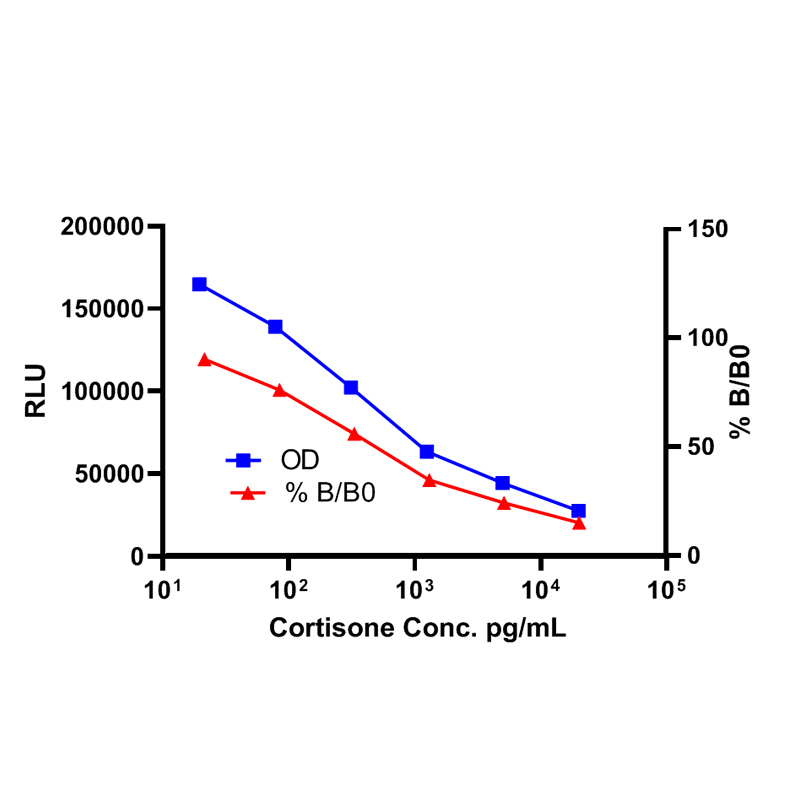
ZX-66104-96 | Cortisone CLIA Kit
Cortisone (C21H28O5, compound E) was identified and extracted from bovine suprarenal gland tissue byMason, Myers and Kendall in 1936. The presence of multiple cortin‐like compounds led the authors to speculate that the study of Compound E, which had the qualitative but not quantitative activity of cortin, would reveal the nature of cortin. Compound E and the more active glucocorticoid, compound F, are now called Cortisone and Cortisol, respectively. The concentrations of these two glucocorticoids vary due to the activity of two enzymes 11β‐hydroxysteroid dehydrogenases 1 and 2 (11β‐HSD). While most tissues have the ability to express either enzyme, 11β‐HSD1 is found primarily in the liver where it converts Cortisone to Cortisol, whereas 11β‐HSD2 is found in tissues such as the kidney where Cortisol receptor binding is required. 11β‐HSD2 deactivates Cortisol to Cortisone, and prohibits receptor activation. This glucocorticoid “shuttle” helps to initiate and regulate the anti‐inflammatory response, making Cortisone one of the modern “wonder drugs”. Monitoring the ratio of Cortisone/Cortisol has applications in diabetes, obesity, metabolic syndrome, osteoporosis, and chronic fatigue syndrome in addition to adrenal diseases. Cortisone and Cortisol concentrations exhibit a predictable diurnal pattern and can be measured in extracted dried feces, or in serum, plasma, saliva and urine. The ZellX® Cortisone CLIA kit is designed to quantitatively measure the activity of 11β-HSD Enzymes in serum, plasma, urine, saliva, extracted dried fecal samples, and tissue culture media samples in 2 hours. To measure cortisone using colorimetric ELISA use our Cortisone ELISA Kit (Cat. No. ZX-55104-96).

Technical Support: Customer satisfaction is very important to us. Please call us at +49(0)30 81309085 or send an email to technical[at]zellx.de with your technical questions. A member of our scientific staff will be glad to assist you.